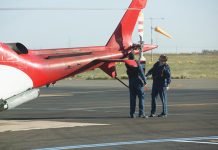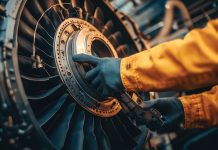You don’t need a doctor to tell you when you’re sick. Instead, you watch your health, try to keep fit and make appointments. It’s the same with aircraft. However, CASA airworthiness inspectors have noticed something halfway between folklore and a trend develop among some aircraft operators: the pernicious idea that their aircraft’s airworthiness is the responsibility of that aircraft’s maintenance organisation – it’s not. Registered operators, be they organisations or individual shoulder that responsibility.
CASA Advisor Circular 1-04v1.0 makes an aircraft operator’s responsibilities clear.
‘Registered Operators (RO) are required to ensure that aircraft being used in their operations are maintained in accordance with the applicable sections of Parts 4A to 4D of the Civil Aviation Regulations 1988 (CAR) and they are in a condition for safe operation,’ AC 1-04 v1.0 says.
The same principle applies for all aircraft, including private aircraft and aircraft operated under CASR Part 42.
While this might sound daunting it’s really not that much different to what you do as an operator of a body, vehicle or home. You monitor how everything’s going and call for expert help or repairs as required. In every case, early intervention is preferable to ignoring the problem and hoping it will go away.
Your aircraft is probably the second most complex system you operate – after your body, but it lacks the reporting systems of pain, tiredness and discomfort. And unlike dentists, aircraft maintainers are not in the habit of sending nagging reminders. This means you need a system of maintenance to ensure your aircraft or your organisation’s aircraft is being properly maintained.
AC1-04v1.0 lays out the basics.
It is recommended that the operator’s system and manual/exposition (when required) contain:
- a process that ensures the aircraft maintenance schedule is complete and appropriate
- acknowledgment of the operator’s responsibility in relation to continuing airworthiness of the aircraft which includes the maintenance planning and scheduling
- responsibilities and procedures for the person employed for scheduling and tracking of aircraft maintenance
- processes for contractual arrangements with maintenance providers
- and a process that explains how configuration of aircraft equipment is managed and maintenance is traced for items that are removed or swapped on a regular basis such as seats (for passenger to cargo reconfiguration) emergency, survival and role equipment
- a process for how major aircraft components, rotable items and lifed-parts are managed and tracked.
(Just so you know, a rotable item is a component in an aircraft that is designed to be removed, repaired, and reinstalled multiple times during the life cycle of the aircraft. Avionics and fuel pumps are examples of rotables.)
Air transport, aerial work, aerial application and flight training operators are all required to have either an exposition, maintenance controller or a nominated individual dedicated to managing continuing airworthiness.
‘In all cases, the operator would be expected to include in the exposition/operations manual a system to coordinate and ensure the maintenance of their aircraft is carried out at the specified time (TTIS), date and cycles of each aircraft’ AC 1-04 v1.0 says.
Operators must also ensure their aircraft are maintained such that they continue to comply with the certification basis specified in the aircraft’s certificate of airworthiness. Operators must also comply with all applicable airworthiness directives in the aircraft’s maintenance program. These can be found on the national aviation authority of the aircraft’s state of origin or the aircraft type certificate holder’s internet presence.
Staying current on these is the operator’s responsibility, not the responsibility of the maintenance organisation. However, the CAR maintenance release rules require the person issuing the maintenance release (MR) – the maintenance organisation – not to issue the MR unless all required maintenance has been carried out.
Further reading:
- AC 1-04 v1.0 – Registered operator responsibilities for continuing airworthiness (casa.gov.au)
- Airworthiness Directives | Civil Aviation Safety Authority (casa.gov.au)





